
Do you want a dog that will always be by your side, love to sit on your lap all day, and follow you everywhere? These types of dogs are called “Velcro dogs” or “clingy dogs” because they just have to be near their humans all the time.
These velcro dogs are a special breed that loves their humans above all else.
These dogs follow their owners everywhere and can’t stand to be away from them. They just love you so much that they can’t imagine a second of their lives without you.
In this article, we’ll discuss why some dogs become velcro dogs and whether or not you should be concerned. If your dog’s clingy behavior becomes a problem, we’ll also provide tips on dealing with it.
Check out this list of the top 15 dog breeds that are extra clingy.
Top 15 velcro dog breeds
It’s not unknown to many that dogs can be clingy sometimes, which is why they require discipline. However, some people like to have clingy dogs. Here is a list of clingy dogs that you will love to have by your side –
1. Vizsla

Vizsla dog breed is the ultimate Velcro dog because it is very clingy to its human and is happiest when right by your side. The Vizsla is a lively, gentle, and affectionate breed with excellent learning abilities. They’re known for their biddable nature, but there are always exceptions – some may be stubborn and shy!
The Vizsla pup is a mix between the elegant Falcon and active lifestyles. This means they are perfect for people who enjoy hiking, swimming, or hunting with their dogs! They also make excellent cuddly companions that you can take on any adventure as long as it doesn’t involve too much physical activity. This animal needs plenty of rest to keep up his energy levels (just like humans!).
2. Rat Terrier

Rat Terriers are adorable little dogs that are good at escaping. They love to play and have a lot of energy. They are also very funny, which makes them enjoyable to be around.
Do rat terriers cling to you and become destructive if they feel like they’re not getting enough attention?
Yes, they can be very clingy and become destructive if they feel ignored. Additionally, rat terriers are prone to anxiety and can be quite loud if they feel anxious.
Hence, if you don’t hang out with it, it’s going to get upset. On the other hand, if you are not in a good mood, it will pick up on it and will do its best to cheer you up!
Rat terriers are a great breed of dog for families with children. They are energetic and playful but also gentle and loving. If you’re looking for an enjoyable dog to have around the house, a rat terrier may be the perfect fit for your family.
3. Papillon

The Papillon dog breed is a very affectionate and loyal pet. They form close bonds with their human family, often called “velcro dogs,” because they like to follow owners around the house get in between everything! The Small Dog is an excellent choice for those who want a protective and loyal companion.
Young girls are huge fans of the Papillon. It is a beautiful dog with butterfly-like ears and a sweet face.
Generally, it is playful and can’t live without cuddles, which is why it is on this list of velcro dogs.
4. Labrador Retriever

Labrador has been the number one dog in America for many years in a row. It is a loyal pet that loves to be pampered and taken care of by its master or mistress! The labrador is a large-sized dog, so you may think they can’t be a lap dog, but I suppose you might be wrong because one of their common traits is sitting on the lap whenever they get a chance. Their focus on their human makes them excellent therapy and service dogs too. They are playful, loyal, and would go anywhere with you.
5. German Shepherd
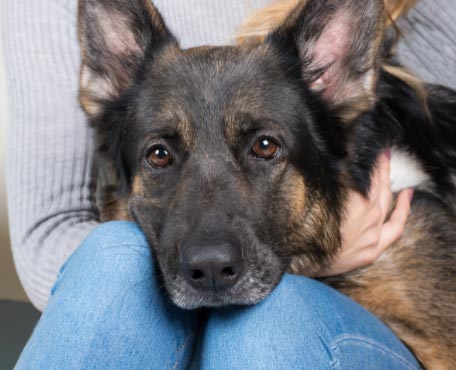
Many people think German Shepherds are good guard dogs, but their main reason for being so is their unconditional love for their owners.
They are one of the most loyal and dedicated dogs out there. They’re protectors with a strong work drive who can think independently due to their high intelligence (among other things). This makes them quite trainable – perfect for your next furry friend!
I have attached a screenshot below for your reference-

6. English Toy Spaniel
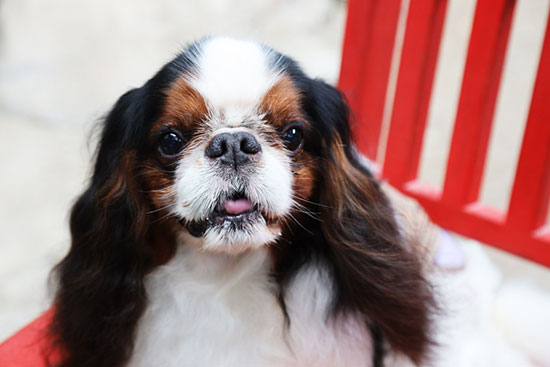
The English Toy Spaniel is a cuddly, lap dog, and you know what that means. It is officially a velcro dog, and won’t settle for anything less than undying affection.
The ETS is quieter and more reclusive than its Cavalier cousins, but it can have a mischievous spark. They prefer single people to be their companions in life as they are not “a hail fellow well met” type of dog!
English toy spaniels are a great dog for those looking to have an indoor dog. They don’t need much exercise and prefer it when their owners take them on walks outside rather than running around in the park all day long! These playful pups also get along well with children but make sure you keep your little one’s attention span because this breed can be easily bored if there isn’t anything interesting going down around him or her (like playing fetch).
7. Great Dane
The Great Dane is a friendly, family-oriented dog that loves to be around people. Don’t be surprised if your Great Dane follows you everywhere because they have the traits of becoming clingy to their humans.
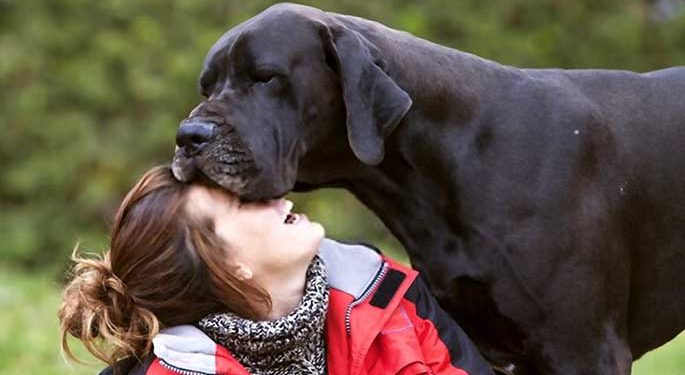
Great Danes are known for being affectionate, and it is no surprise that they want to be close with their human companions. They may even climb onto your lap if given a chance!
This big dog can stand as tall as three feet but is very gentle towards little kids. It is super protective of its family, and also super loving towards them.
8. English Mastiff
English Mastiff can be very stubborn and take longer to train than other breeds, but once you have done, they will do anything. Training should always start out gentle so as not to cause any injury or pain in the process of learning new behaviors from an owner’s perspective

The Mastiff is a protective dog that will step in to prevent arguments between family members.
They’ll step in to stop arguing spouses or parents from hurting their children. Still, only if they feel it’s necessary and never roughhouse with this dog – Mastiff owners should know how sensitive they are!
Weighing about two hundred pounds, the English Mastiff is a big dog with a gentle heart. It may be too big for small kids, but it loves to show everybody love.
9. Chihuahua

Chihuahuas are known for being clingy. These pugs will follow you around and suffer from separation anxiety if left on their own! Chihuahuas get attached to their owners pretty fast. In addition, they will protect their family at all costs in the face of danger.
Chihuahuas are known for their intelligence, loyalty, and enthusiasm. They make great companion pets that will keep you entertained all day with endless chase games!
The Chihuahua is a small yet bold and confident dog. It’s often described as being terrier-like because of its tenacity in life! Don’t worry because these dogs aren’t always aggressive by nature.
The Chihuahua is a small dog that needs to be properly socialized when it’s young in order for them not only to grow up but also become well-rounded. The best way you can do this? Let your puppy meet lots of new people, see different things around town and hear all sorts of sounds from every angle!
10. Cavalier King Charles Spaniel
This is another breed of dog known for being too sweet. In fact, don’t take it home if you want a watchdog. But if you want a live, teddy bear, this is for you.

11. Border Collie

The Border Collie is one of the most focused breeds out there, always watching its owner to ensure they are safe. These high-energy dogs love nothing more than pleasing their people and will follow you around everywhere! The overall appearance is that of a muscular but agile worker unaffected by passing fads. Both the rough and smooth coats are available in a variety of colors and patterns.
12. Australian Shepherd

Australian Shepherd is a dog breed that was bred to be ever watchful, and they’ll cling like plastic wrap on their families. They can even ignore other dogs to stay by yours! But make sure you give this energetic pet plenty of exercise so it doesn’t become overweight or obese.
This dog is a family lover. Don’t be surprised if you find your Australian Shepherd watching TV with you, sleeping with you, or giving you a hand in the yard. It just can’t get enough of the family life!
13. Bichon Frise

Another family-friendly dog is the Bichon Frise. It is not the clingiest compared to other velcro dogs. However, it loves to hang out with its family, and won’t leave them alone.
The Bichon Frise is a very popular breed that requires plenty of attention and care. In addition to being gifted with the ability to sit, shake hands or roll over on command, they also have higher levels than most other breeds.
14. Bloodhound

Bloodhounds are friendly, intelligent dogs that can be quite clingy. They’re also very sensitive to changes in their owners’ lives which often leads them into trouble when it comes time for new homes or apartments because they don’t want anything changed about the environment where “you” live!
Though trained to catch criminals, the Bloodhound has a soft soul. It likes to be in the house with its family. In fact, the more time it spends with the family, the happier it is.
15. Belgian Sheepdog
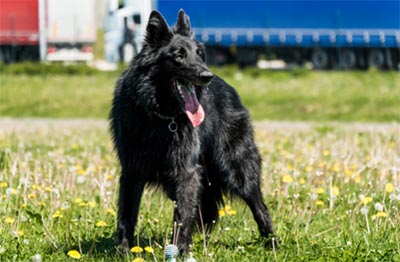
The last on our list, the Belgian Sheepdog, is a supercharged, velcro dog. You have to partake in various physical activities with this dog due to its need for exercise. Once all worn out, it will just snuggle next to you quietly.
What is a velcro dog?
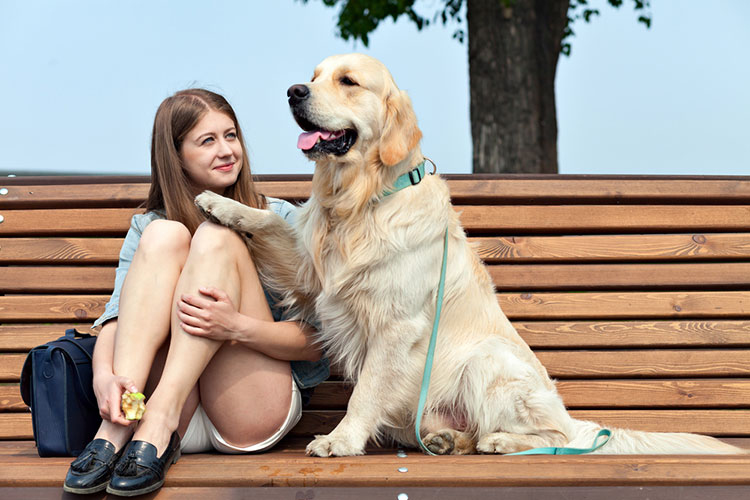
If your dog follows you everywhere, even to the bathroom – that is a velcro dog. However, it’s not a bad thing until it gets upset with you for leaving it alone.
If your dog is always at your side, chances are they’re a velcro dog. These clingy pooches simply want to be close to their owners and feel safe and secure. If you have a velcro dog, make sure you give them plenty of love and attention. Be sure to also provide your furry friend with plenty of exercises, as they may become restless if not given enough activity.
Most people think that having a velcro dog is a bad thing. They think the dog is clingy and needy, always following their owners around and never giving them any space. But I happen to think differently.
I’ve had a velcro dog for as long as I can remember. My parents used to tell me stories of how my dog would follow me from room to room when I was just a baby. He’d be right at my heels if I ever got up to leave the house. And even now, as an adult, he’s still by my side 24/7.
Some might call this clinginess a bad thing, but I see it as nothing.
When you live in the same house as your dog, your dog’s mood is also going to affect yours. Therefore, we have prepared this article to spread more awareness about the velcro dog syndrome, what causes it, how it affects the dog, and its prevention methods.
In the end, I have provided a list of dog breeds that are naturally clingy so you can interpret the difference between a naturally clingy breed and a velcro dog.
Causes of the Velcro Dog Syndrome
Velcro syndrome can be a concern for some dogs, even though some are naturally clingy. The following are a few reasons your dog might have Velcro syndrome.
1. Vision or Auditory Changes
It is possible for dogs to lose their sight or hearing because of aging or a surgical procedure. As a result of the loss and trauma, they may become more reliant on you. As a result, Velcro dog syndrome occurs.
2. Boredom
If you have assumed that your dog will just entertain itself while you stay busy with work, think again. It may cling to you if it’s not getting plenty of exercise and playtime. Hence, you have to arrange some playtime with them so that they don’t develop velcro syndrome.
3. New Home and Neighborhood
Your dog can feel uncomfortable in a new home and neighborhood. This may be one of the causes of velcro syndrome. The good news is that you can help it relax by following the same daily routine.
4. Your Behavior
Now, you can also encourage clingy behavior in your dog. For example, when you let it sleep on your bed every night, it becomes used to the habit.
In the same way, giving attention to your dog too much may make it clingy as well. So the simple solution is to maintain a healthy balance of togetherness and separateness.
5. Medical Issue
If your dog is generally not clingy, but start to exhibit signs of velcro syndrome, an If your dog is generally not clingy but starts to exhibit signs of velcro syndrome, an underlying medical issue may be the reason. The best possible solution is to visit the vet and resolve the issue.
Issues with the Velcro Dog Syndrome
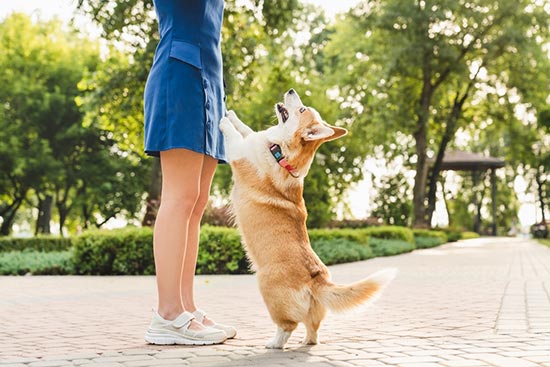
Now that we have gone over the causes of the velcro dog syndrome, it’s time to get to know how this syndrome affects your little buddy. Often, clinginess is related to past trauma and current stress.
The velcro dog syndrome can weigh down on your dog emotionally and physically. It experiences no pleasure in being without its owners, hence creating a limit to what it can explore otherwise. This syndrome can even make the dog depressed and lose appetite.
Common symptoms of your dog experiencing separation anxiety may be understood if it exhibits any of the following points when you leave – it attempts to escape, drools and pants excessively, urinates or defecates where it’s not supposed to, needs to chew, bite or destroy something, barks and howls constantly, and runs or walks around anxiously. It may also exhibit these behaviors when you are getting ready to leave.
Moreover, some experts believe that dogs become clingy because of how they were raised. In this regard, it can be deduced that if we just change the way we treat our dogs, we can prevent them from developing the velcro syndrome.
Steps to Prevent the Velcro Dog Syndrome
Generally speaking, some dog breeds are naturally clingy, but not in an unhealthy sense. They just love humans, which is why they like to stick around.
In saying that, the velcro dog syndrome is more of a disorder, where the dog feels like its life has no meaning without its owners. Co-dependency and clinginess are also prevalent in humans, which are not considered healthy as well.
We are touched by the news that highlight how dogs fail to accept the death of their owners and live all of their lives in misery after their family’s death. No matter how touching it looks, we should be more focused on helping those dogs move on from the death of loved ones, and be able to start a new, healthy life.
Just as with humans, we can prevent dogs from living with velcro syndrome by raising their confidence in themselves. A few tips are given below by which you can raise your dog’s confidence in itself and life.
1. Set Healthy Boundaries

Yes, you love your dog, but the reality is that you can’t be with it all the time. After all, you have work, you need to pay the bills, you need to pay for your dog, you have a social life, and you also need time for yourself.
Other areas of your life need your attention, and you must teach your dog that. Speak to it kindly, and explain your situation. Your dog may not speak human language, but it understands everything you say.
Furthermore, if it wants to sit on your lap when you’re in the middle of something important, use commands to express that you need space. For example, teach it to follow the ‘leave it’ command so that it leaves you alone when you’re busy.
You may need to use the commands more often if your dog is indeed going through the velcro syndrome. It will do anything to be near you, so don’t pay it attention when you’re in the kitchen, or doing something important.
Since dogs can read your mood, you have to remove the focus from your dog, for example, by closing the door and refuse to make any eye contact with it. It will get the message after a few practice rounds, and then leave you alone eventually.
2. Doggy Day Care
If you are a busy person who has no time to teach etiquette to his or her dog, take the help of a dog daycare. The time spent away from you is going to help your dog become more independent and self-reliant.
Additionally, it will find new, interesting things to occupy its time with in the daycare. Having new friends is going to change its life for the better.
3. Be Smart
Make sure your dog has lots of toys to play with so that it’s not always playing with you. Spread the toys in different locations of the house, and let it look for them. On the other hand, if it doesn’t want to go, use commands.
You can also teach your dog distance by playing games that create separation between you two. Some of the games that create distance between you and your dog are hide and seek, fetch and nose work games.
As a rule, your dog will get tired after playing and exercising, if you are taking it out for a walk. So it will fall asleep quickly, and won’t even notice what you’re doing. You can do this to create space between yourself and the dog.
4. Give Treats for Staying Away
If your dog gets rewarded for staying away from you, it will keep doing it more often. Place some treats in your dog’s personal space, so that it can spend some time there.
Command it to leave you alone, and as a reward, give treats. Normally, you can use the ‘go to’ command for this situation. In the same way, refuse to give any treat or pat, if it disobeys you.
5. Teach House Chores
Many people are teaching their dog’s house chores so they can be of help around the house, and the dogs love being of service to their families. You can teach them simple things, such as closing doors, sorting the laundry, fetching the newspaper, finding things around the house and other useful chores.
This way, not only are you getting some help around the house, but your dog will also find something to do other than playing, eating, and pooping. In order to remove the Velcro syndrome, your dog needs mental stimulation, analytical thinking, physical activity, and a sense of purpose. House chores will develop these qualities in it, which will slowly get it out of boredom and depression.
6. Get Your Dog a Buddy
When you are the only living being in the house, your dog has no choice but to follow you around. Unless you have other people living with you, your dog may feel obliged to be with you wherever you go.
Option one is that you can get another roommate or a family member to live with you. Then your dog will have more options to cling to.
On the contrary, option two is to get a new pet for your little friend. Dogs can coexist with a number of animals, including cats, birds, rabbits, hamsters, chickens, ferrets, snakes, lizards, turtles, and fish. So make your pick, and end the velcro dog syndrome forever!
Difference Between Clinginess and Velcro Syndrome
A clingy dog enjoys being around you, but it won’t become anxious when you leave the house, whereas a dog with velcro syndrome is going to freak out when you disappear.
A dog with Velcro syndrome will engage in destructive behavioral patterns when you leave due to anxiety. Some of the destructive patterns include biting, chewing, and destroying things, escaping the house, howling, barking, and whining; and strutting nervously.
If you see that your dog is doing the above-mentioned activities, then you either need to take matters into your own hands or seek professional help by contacting a veterinary behaviorist.
You can also follow these protocols to bring positive changes in your dog’s behavior by yourself –
Leave the television or radio on when you leave the house. You can also play music or a tv show on your laptop so that your dog feels assured that it is not home alone.
Let another person spend time with your dog and engage in different activities. It can even be a veterinary behaviorist, who can teach it to calm its nerves every time it panics or sees its owner leaving.
Making your dog sleep with you in your bed will only make things worse. Let your dog sleep on its own in order to become more independent.
Your velcro dog may follow you everywhere once you get back home, seeking attention. Although it looks bad, you have to ignore it. Your dog will find something else to do after the rejection.
Now, this one is interesting. You have to trick your dog into believing that you are leaving, just to test how long it can stay calm without you. You need professional guidance to conduct this experiment, though.
When testing for the first time, come back into the house immediately. During round two, pretend to be outside for two minutes, then come in. Increase the time gradually for up to ten minutes, keeping track of your progress.
For example, if your dog is anxious, it may need to take medicine to help change its behavior. However, only a professional veterinary behaviorist can recommend medications like this upon a thorough check-up of your dog’s Velcro syndrome. Some dogs recover from the syndrome without medications.
CBS 3 Pet Project: The Velcro Dog
Long Story Short
If you have found this article, then it is no coincidence. You may be dealing with a clingy dog that doesn’t want to understand personal boundaries.
We hope after reading this article, you have been able to understand the difference between a dog that likes to be cuddled, and one that is actually suffering from velcro syndrome.
For the most part, it is easy to spot a dog that is going through the syndrome. In this case, you must ensure that proper steps are taken to get your dog out of the syndrome.
However, don’t be cold to your velcro dog because that will hurt its feelings. Setting healthy boundaries, getting a new roommate or a new pet, and sending them to a dog daycare are much better ways to deal with the problem.
Related Post:
Most Trainable Dogs 2020
Canidae Dog Food Review
How to Get Your Dog to Stop Barking
What You Need to Know about Silver Labrador Retriever
20 Teddy Bear Dogs that will Blow Your Mind



